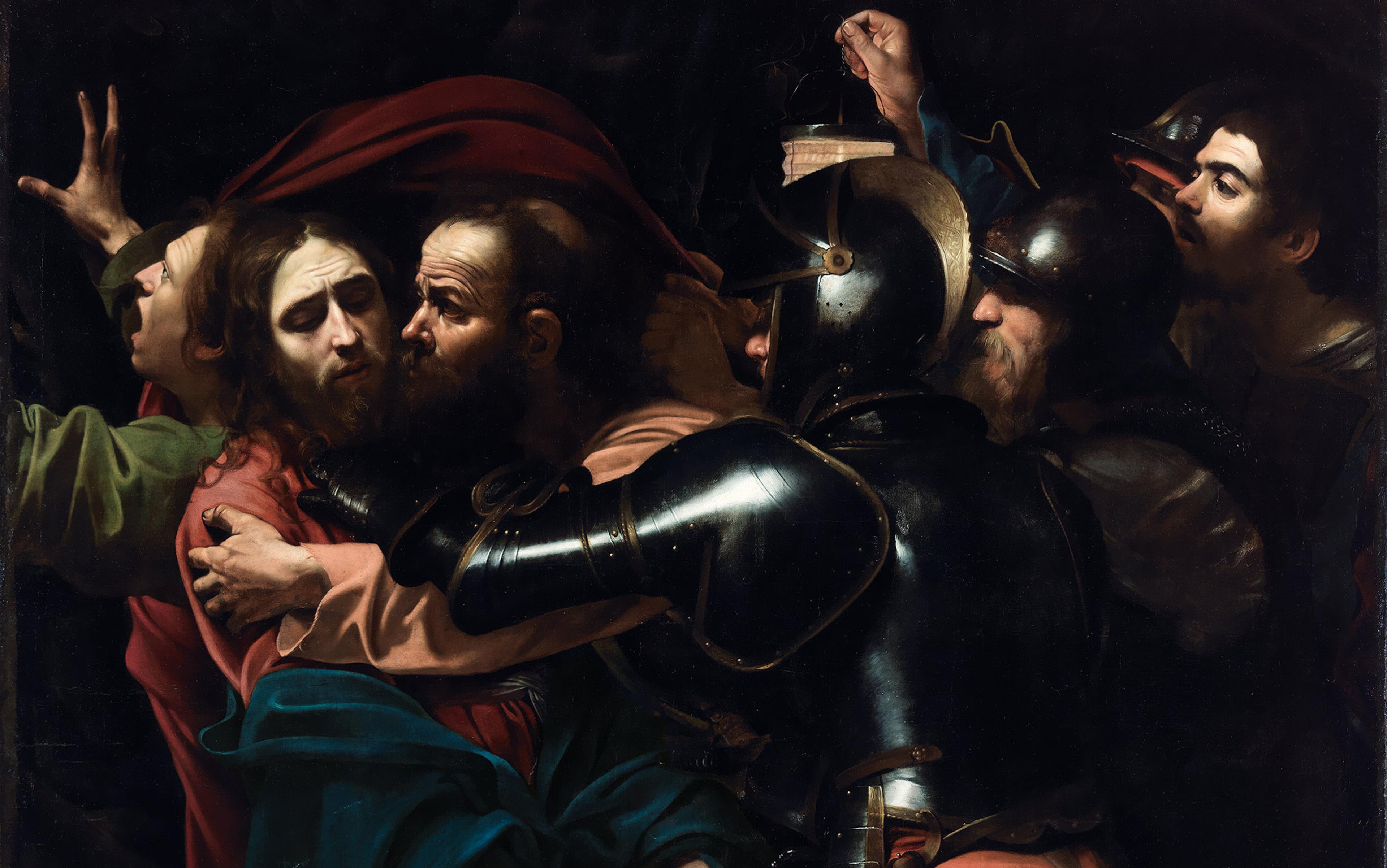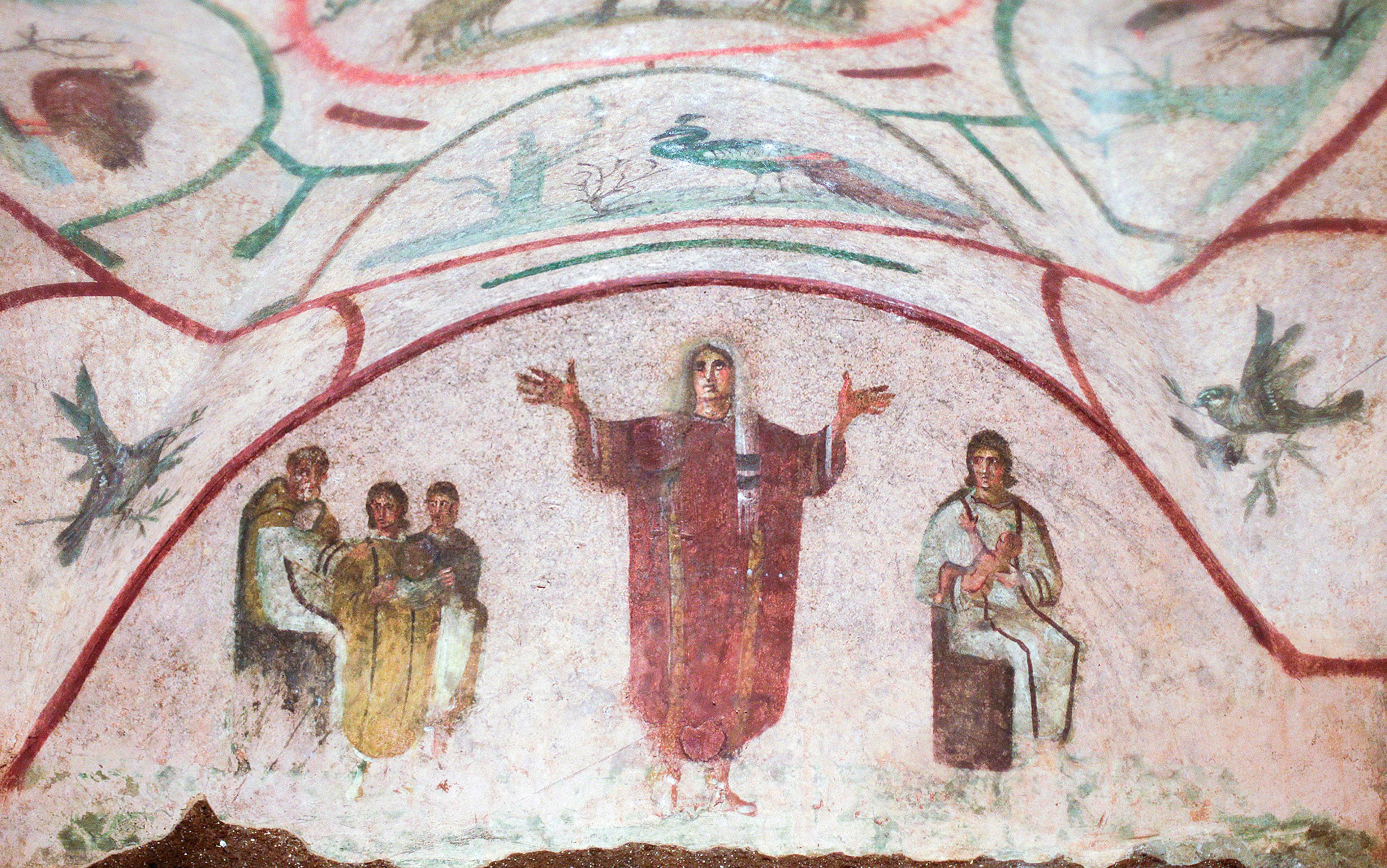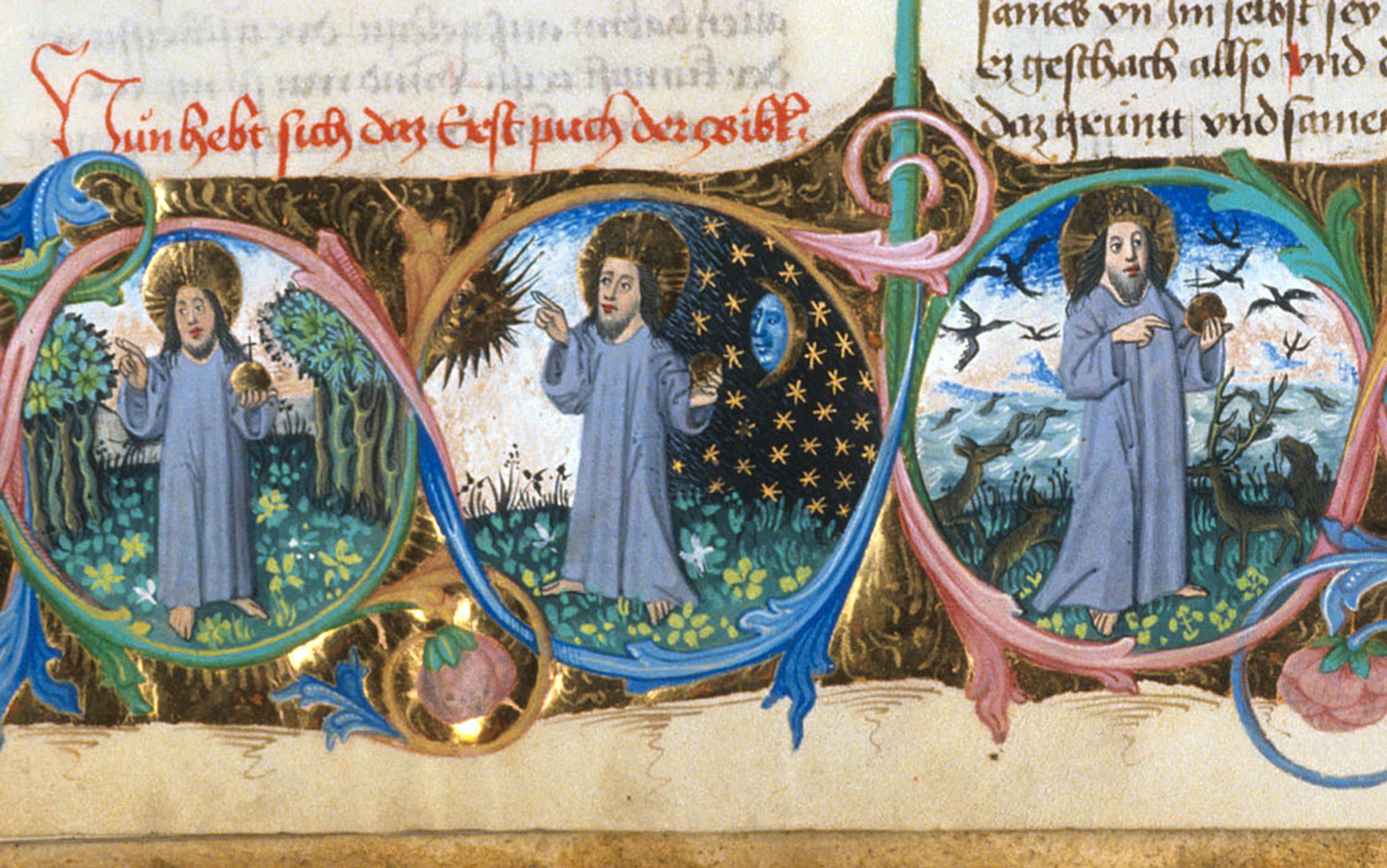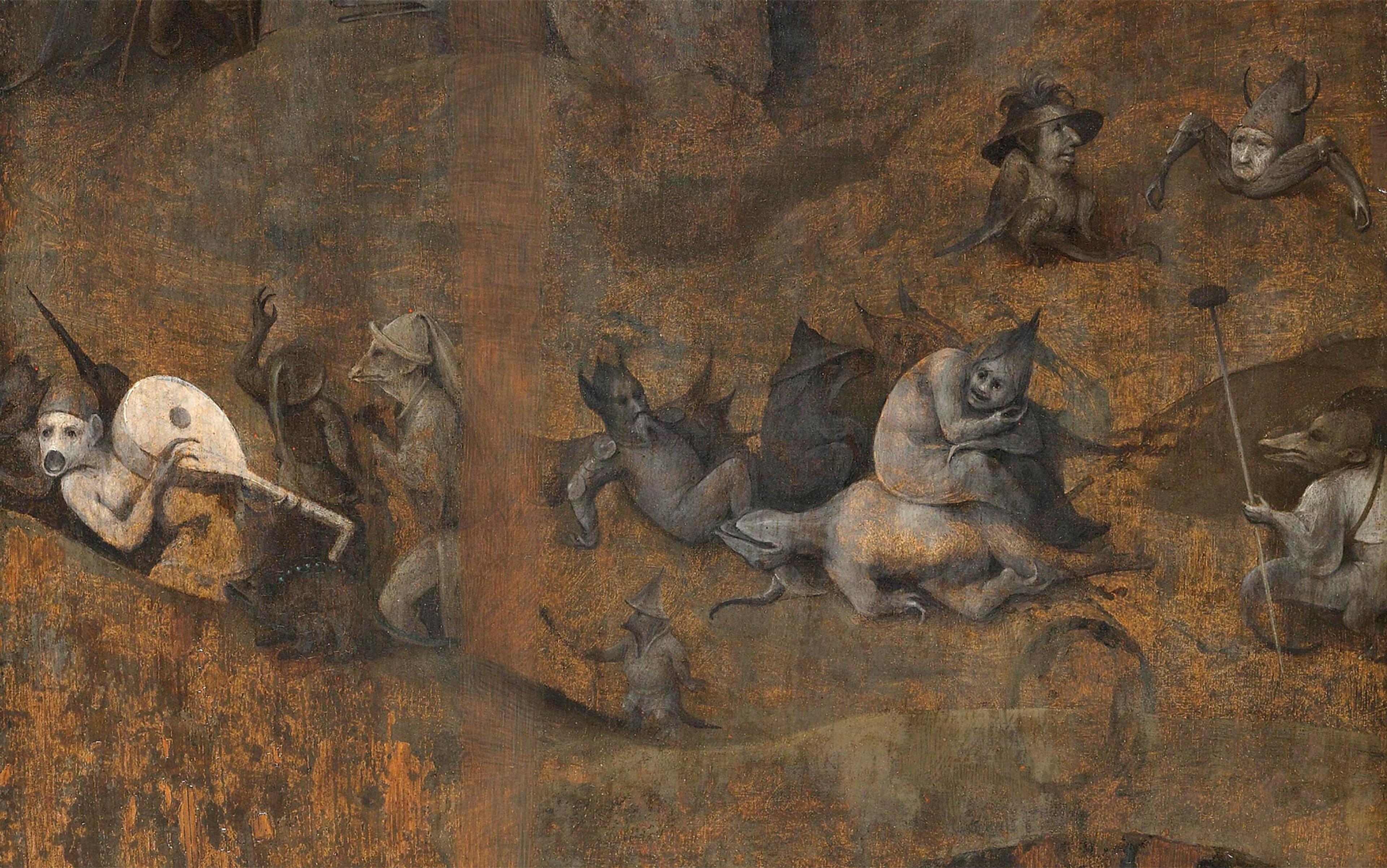Why did Judas do it? The betrayal of Jesus of Nazareth by Judas Iscariot, one of his 12 disciples, has become the paradigmatic act of treachery in Western culture. Modern historians are sceptical of many and even most details of Jesus’ life and death found in the gospels of the New Testament, but nearly all agree that one of Jesus’ disciples did facilitate his arrest and eventual execution by Roman authorities. Why would early Christians have made up such a disturbing scenario, and why would St Paul and the multiple authors of the gospels have repeated it if it were not a fact they had to confront? Knowing whether and why one of Jesus’ closest followers betrayed him might shed light on how Jesus understood his mission and why he was so controversial, questions of compelling interest for the history of the Roman Empire and its religions.
If the gospels agree that a disciple named Judas betrayed Jesus, they do not agree on why he did so. Matthew, Mark and Luke all report that Judas received money from Jewish leaders, but only Matthew explicitly makes greed Judas’ motive. According to Luke and John, Satan entered Judas, and John has Jesus then immediately command Judas: ‘Do quickly what you are going to do.’ Mark takes a somewhat fatalistic approach – Jesus says: ‘The Son of Man goes as it is written of him, but woe to that one by whom the Son of Man is betrayed! It would have been better for that one not to have been born.’ Likewise, Mark doesn’t report what happened to Judas. Matthew has Judas die by suicide in remorse, while Luke reports in the Acts of the Apostles, the sequel to his Gospel, that Judas fell and spontaneously combusted: ‘his body burst open and all his intestines spilled out.’ The writers of the New Testament gospels believed as a matter of faith that it was God’s plan for Jesus to die, that indeed dying for others was the Son of Man’s primary mission (‘as it is written’). They did not consider the possibility that Judas handed over Jesus for a noble reason.
The Gnostic Christian author of the Gospel of Judas, however, did suggest that. Even though Judas’ act of betrayal was bad, Judas knew why he had to do it – because Jesus had told him why. No historian thinks that the Gospel of Judas reports what really happened or gives us any insight into the real Judas’ character or motivations: it was almost certainly written decades later than the New Testament gospels, and it is no less shaped by theological commitments than they are. Nonetheless, this author’s decision to place Judas at the centre of the story and to depict him as doing what Jesus wanted must have been intentionally provocative. It signalled a Gnostic protest against central beliefs and practices of emerging orthodox Christianity such as Jesus’ identity as the son of the God of Israel, his death as a sacrifice for the sins of human beings, and the Eucharist as a commemoration of that sacrifice. In this gospel, the question of why Judas did it raises the larger questions of who Jesus is, what god Christians should worship, and whether their rituals save people. In other words, the nature of Christianity itself was at stake.
The Gospel of Judas did not become available to most scholars and the wider public until the spring of 2006, though historians had long known that a gospel of Judas existed in antiquity. Several early Christian authors refer to it; the earliest is Irenaeus, a Christian leader in Lyons, who briefly mentions it in his massive anti-heretical work On the Detection and Overthrow of Knowledge, Falsely So-Called of around 180 CE. According to Irenaeus, the gospel originated among ‘the Gnostics’, a group of Christians who claimed to possess special ‘knowledge’ (in Greek, gnōsis). He reports that it portrayed Judas as having more knowledge than all the other disciples, and that his act of betrayal led to the dissolution of the present cosmos. Although Irenaeus apparently had multiple Gnostic writings in his library, the Gospel of Judas is the only one whose title he gives. Historians of Christianity assumed that, like so many other early Christian works whose titles we know, it was lost forever, thanks to the failure of medieval monks to copy it.
It was most likely in the late 1970s that an unknown person or persons in Egypt discovered four ancient books, including a Greek mathematical text, a copy of the biblical book of Exodus in Greek, and a copy of the letters of St Paul in Coptic. The fourth book was a papyrus codex that contained several works in Coptic, one of which is the Gospel of Judas. Coptic is the last stage of the ancient Egyptian language. In late antiquity and the Middle Ages, many works in Greek were translated into Coptic to make them available to a wider range of readers. Based on radio-carbon analysis and the handwriting, the codex that contains the Gospel of Judas can be dated to the 4th century, about 200 years after Irenaeus had read the gospel in the original Greek. Most historians (but not all) have concluded that the Coptic Gospel of Judas is a translation of the one known to Irenaeus; the translation was likely made not long before the codex was copied. The Gospel of Judas, the earliest known Gnostic writing, had been found.
But why did it take until 2006 for it to become available? That is a story of greed, incompetence and misunderstandings that is too long to repeat in full here. Because those who possessed the codex demanded large sums of money and reputable academic institutions hesitated to acquire a manuscript that was probably removed from Egypt illegally, the codex languished for decades without proper care. It spent several years in a safety-deposit box in a Long Island bank, and one misguided person even placed it in a freezer and then thawed it (devastating for organic material like papyrus). The result of nearly three decades of abuse and neglect is a damaged codex with numerous missing pages, holes in the surviving pages, and much text that is only barely legible. In fact, after the Coptic text and first translations into modern languages were published in 2006, additional fragments surfaced in 2009 and were published in a scholarly journal in 2010. Readers should be aware that anything that they read about the Gospel of Judas that was published before, say, 2011 may be valuable and insightful, but also suffers from ignorance of the new fragments. About 10 per cent of the text of this gospel remains lost – so it is possible that new fragments will appear in the future and call into question some of what I say here.
The gospel does not claim to be written by Judas: it is the Gospel of Judas, not according to Judas. The author identifies the work as ‘the secret report of judgment, in which Jesus spoke with Judas Iscariot during eight days prior to the three days, before he celebrated Passover.’ Even though in parts of the gospel Jesus speaks with the other 11 disciples, the author names only Judas Iscariot as the recipient of Jesus’ revelations, and he places this conversation ‘prior to the three days’ – the period from the crucifixion to the resurrection – and before Jesus celebrated Passover, that is, the Last Supper.
The gospel begins with a description of Jesus’ mission and ministry that any Christian would accept: Jesus, it says, came to earth to save people and performed miracles, and he called a group of 12 disciples for special instruction about God and the future. But then the author claims that often Jesus did not reveal himself to his disciples and instead would be found ‘in the midst of the children’. It’s a telling contrast: three of the New Testament gospels feature scenes in which Jesus welcomes children, and the disciples react petulantly. It turns out that the ‘judgment’ that Jesus delivers condemns primarily the original disciples other than Judas as sinful and ignorant of the truth about Jesus.
At this point, the gospel shifts out of the narrative time of the well-known gospels and narrates a series of four appearances of Jesus and his dialogues with the disciples and Judas, which occur in an unspecified place in Judea and during an indeterminate time. Through these dialogues, the readers learn how this Gnostic author differs from his fellow Christians on the identities of God and Jesus and the meaning of the crucifixion. We find out why Judas had to do it. The gospel concludes briefly with Judas handing over Jesus to Jewish leaders. It seems that he had learned what Jesus wanted him to know.
The information that Jesus conveys to Judas and thus to readers in the dialogues is complex, but can be reduced to five essential points, which culminate in explaining Judas’s act.
It is from this higher reality of pure spirit that Jesus has come. Judas alone knows this
First, the disciples and the Christians who follow them mistakenly worship a god that they identify as the father of Jesus, but Jesus in fact comes from a higher realm and has been sent by a god who cannot be named. In the first dialogue scene, Jesus laughs when he discovers the disciples sharing a meal that they call their ‘thanksgiving’ – in Greek, eucharistia. Jesus laughs because the disciples don’t know what they’re doing; it is through this ritual, he tells them, that ‘your god’ receives praise. Only Judas among the disciples knows that Jesus is not the son of the God whom other Christians worship – that is, the God of Israel who, according to the Bible, created the world and made covenants with the Jews. Rather, Judas tells Jesus:
You have come from the aeon of the Barbēlō, the immortal (aeon). But as for the one who sent you, its name I am not worthy to proclaim.
It was a distinctively Gnostic idea to believe that there is a god higher than the God of Israel, an ‘invisible spirit’ beyond name or personality. This god has unfolded itself into a series of emanations called aeons, which are both realms and extents of time, and the highest such aeon has the obscure name Barbēlō. It is from this higher reality of pure spirit that Jesus has come. Judas alone knows this, and this is why Jesus sets him apart for instruction in ‘the mysteries of the kingdom’.
Second, the disciples and their followers may be ignorant, but there are true Christians, a ‘mighty and holy race’, to whom Jesus goes and who will not be ruled by the hostile lower beings who rule this cosmos. The gospel consistently contrasts a single ‘great race’ that will be saved with the multiple ‘races of human beings’ that serve the lower gods in ignorance and sin. In this respect, it resembles other works of early Christian literature that set Christians apart from other people as a ‘chosen race’ or ‘holy nation’. Unlike them, however, the Gospel of Judas places most other Christians among the sinful peoples and sarcastically refers to them as ‘the races of the pious’. The rhetoric of race does not mean that individual human beings are born saved or damned and cannot change their fates. Like other ancient writers, our author believes that people can change their race by adopting a new set of customs, especially by giving up their traditional gods and rituals for the proper worship of the true god.
Third, the Eucharist that other Christians celebrate brings only death to its participants, for it is performed by corrupt leaders in the name of Jesus and offered to the false god of this world. The disciples tell Jesus that they had a nightmare in which they saw 12 priests offering multiple sacrifices at an altar in a large building marked with a name. The priests seemed to be outwardly humble and pious, but they committed heinous sins, including murder: the disciples were among the devotees. Jesus identifies the name on the building as his name, the 12 priests are the disciples, the altar is the false god that they worship, and the cattle that they slaughter are the people they lead to their deaths. That is, when Christian leaders in the 2nd century claimed to be priests and the successors to the disciples, when they offered the Eucharist as a sacrifice to the God of Israel in the name of Jesus, and when they did this to remember the death of Jesus, they were blaspheming Jesus’ name, worshiping the wrong god, and deceiving their congregants. Jesus commands them to stop doing this.
Judas belongs neither to the saved nor to the damned. Instead, he has a grim job to perform
Although the disciples express remorse for their sins, blaming them on the deceit of the lower angels, Jesus seems to show no interest in forgiving them. Instead, he pronounces judgment on them and ‘all human races’ other than the saved. When death comes as it comes to all people, the souls of the damned will die, but the souls of the great race will be taken up to the immortal realm even as their bodies perish.
Fourth, Judas belongs neither to the saved nor to the damned. Instead, he has a grim job to perform: he will sacrifice the human being who bears Jesus, be cursed and persecuted for that act, and then rule over the lower cosmos as the ‘13th demon’. More than once, Jesus tells Judas that the news he gives him will cause Judas to groan and that Judas will not ascend to the heavenly realm, even though Judas’ star shows him a vision of the temple reserved for the holy people there. Instead, Judas must perform his role in the death of the divine Jesus’ human vessel, and other people will therefore curse and persecute him, as Judas’ vision also showed him. And yet Judas will not be like any other damned person in this corrupt world. He will ascend to the 13th position, above the 12 signs of the Zodiac, and ‘rule’ over the other races as ‘the 13th demon’. This assignment will not be pleasant, but the cosmos will require new management once the evil creator god and its fellow angels have been overthrown.
Fifth – and now Judas learns why he must hand over Jesus – Jesus’ death is the most supreme sacrifice to the lower god and thus a sinful act that Judas performs. As such, it should not be repeated in the Eucharist, but it does accomplish the defeat of the lower god and its angels and thus is necessary. In a long speech to Judas, Jesus explains the origin and nature of the lower rulers. The true angels called forth new angels to set in order and rule this material realm of chaos, but the highest of these new angels, Nebrō (or Ialdabaōth), rebelled against true divinity. He became an ‘apostate’. The second of these lower angels, Saklas, created human beings and imposed mortality upon them. Saklas, then, is the God of Israel known from Genesis and the rest of the Hebrew Bible, and it is he whom other Christians mistakenly worship as the father of Jesus. Saklas and his fellow angels dominate human beings through the calendar – the relentless march of time toward death – and demand from them sacrificial worship. Nonetheless, the true god has made knowledge (gnōsis) available to human beings, so that they can see through these pseudo-gods and recognise their evil. Jesus saves people both by making this knowledge more available and by submitting to the sacrifice that Saklas demands in the crucifixion. The crucifixion killed the human being in whom Jesus lives, but could not harm the divine Jesus, and thus Saklas’ regime of sacrifice came to an end. Or at least it should have. Perversely non-Gnostic Christian leaders continue to act as priests making sacrifices to Saklas, now in the form of the Eucharist.
After Jesus has revealed all this to Judas, he enters a cloud, in a manner that alludes to the Transfiguration of Jesus that Matthew, Mark and Luke narrate. The gospel then returns to the narrative world of the New Testament gospels. Jesus is in a ‘guest room’ praying. It must be the Passover that the gospel had mentioned at the beginning. Jewish leaders are grumbling about Jesus, and some scribes approach Judas, who is outside the room of the Last Supper (the Gospel of John had depicted Judas as leaving the supper at Jesus’ command). The Gospel of Judas concludes tersely: ‘Judas took money and handed him over to them.’ Presumably readers know what happened next and now understand why Judas did it, and they can see that most Christian leaders have woefully misunderstood Judas, Jesus and the crucifixion – that is, the entire foundations of their own religion.
As its self-identification as a ‘secret report of judgment’ suggests, the Gospel of Judas is a remarkably negative document primarily meant to condemn the angelic rulers of this world, the original disciples, and the dominant leaders of Christian communities who claim to succeed those disciples. As a piece of religious polemics, it provides contemporary historians with no information about the historical Jesus, Judas or the disciples. But as the earliest datable Gnostic work, it is a wealth of information about the Gnostics and Christian diversity in the middle of the 2nd century. Much of that information contradicts what we have previously thought.
For example, modern historians have characterised Gnosticism as not genuinely Christian, but as having originated in ‘dualistic’ eastern religions (‘the Persian Orient’) or among disaffected Jews, and as having integrated Christian elements like Jesus only secondarily and superficially. In doing so, historians commonly reject the ancient Christian orthodox depiction of Gnosticism as a ‘heresy’, a diabolically inspired deviation from the original truth of Christianity. And yet the Gospel of Judas is thoroughly Christian: not only are Jesus, Judas and the disciples the main characters, but also the death of Jesus (or at least of his human bearer) is essential to salvation. The crucifixion represents a victory over sin, death and other cosmic powers, a belief that one finds in the letters of St Paul as well. The author may reject the Eucharist as a sacrificial ritual offered to the God of Israel, but his intense interest in it shows how deeply he was involved in the Christian movements. Gnostic Christianity must have been one among the many religious trajectories that the death of Jesus set in motion.
The 20th-century historian of ancient religion Arthur Darby Nock called Gnosticism ‘Platonism run wild’, for most surviving Gnostic writings reveal a strong influence from currents in Platonist philosophy of the time, and use a lot of philosophical jargon. The Gospel of Judas, however, shows no engagement with philosophy, whether Platonist or otherwise. It appears vaguely astrological, with its interest in the stars and in calendrical time, and its imagery draws from lore about rebellious angels and heavenly temples found in the Jewish apocalyptic literature of the preceding centuries. In this respect it resembles the book of Revelation in the New Testament, and suggests that the ideas of apocalyptic eschatology – revealed knowledge about the end of the world as we know it – remained meaningful for 2nd-century Christians of diverse kinds.
Judas’ act remained necessary, treacherous and mysterious
Most previously known Gnostic texts feature assertive female characters, both human and divine. According to the Secret Book (Apocryphon) of John, a 2nd-century text, and other works, a feminine aeon named Sophia (‘Wisdom’) generated the evil creator god of this world, and she acts through Eve and her daughter Nōrea to help human beings. The Barbēlō aeon, from which the Gospel of Judas claims Jesus came, is identified as a ‘mother-father’ and is the most important divine being next to the ultimate invisible spirit. For decades, historians have debated the significance of these feminine characters: were women more active and freer to exercise leadership in Gnostic groups than in ‘orthodox’ ones? The Gospel of Judas lacks such gendered imagery. Did the author suppress strong female characters in favour of a more patriarchal view? Or does the Gospel of Judas indicate that gendered imagery was simply not a feature of all Gnostic thought?
Above all, the Gospel of Judas reveals that what divided Gnostics from their fellow Christians was not that they valued knowledge rather than faith or that they sought salvation in the teachings of Jesus rather than in his death. It is that they identified the God of Israel as a hostile angelic ruler from whom Jesus liberates people rather than as the father who sent Jesus. The relationship between the new salvation that Jesus brought and the God of what Christians came to call the Old Testament – and, in turn, between what we now call Christianity and Judaism – was the central problem of Christian thought and practice in the 2nd century. When the apostle Paul declared that Gentiles (non-Jews) could be saved without following the Jewish Law (in Romans and Galatians) and when the author of the Gospel of John set the ‘grace and truth’ of Jesus in opposition to the ‘law’ of Moses and depicted Jesus as telling the Jews who opposed him that their father is ‘the devil’, they raised the question of how and even whether Jesus represents continuity with the Old Testament and its God. Christians in the 2nd century vigorously debated this question, to which the Gospel of Judas gave a stark answer: the God of Israel oppresses human beings by imposing time and mortality upon them, and only the death of Jesus could bring this God’s evil rule to an end. And that’s why Judas had to hand over Jesus for crucifixion. The betrayal was an evil act, but a necessary one.
Thanks to the efforts of leaders like Irenaeus, most Christians eventually did not accept the views of the Gospel of Judas and the Gnostics among whom it originated. Instead, orthodox Christians identified the God of Israel as Jesus’ Father, even as they declared that Christians need no longer follow the Law found in what they called the Old Testament. That Law, they said, should now be understood symbolically, as referring allegorically to the life and death of Jesus the Messiah and to the Church that would worship him as God’s Son. The death of Jesus was indeed a sacrifice for human sins, prefigured in the sacrifices in the Jerusalem Temple and repeated in the sacrifice of the Mass. Judas’ act remained necessary, treacherous and mysterious. The villainous, even Satanic Judas of the New Testament gospels eclipsed the ambiguous, tragic hero of the Gospel of Judas, until the latter suddenly reappeared in the 21st century.
That reappearance does not answer the question with which we began – why the historical Judas betrayed the historical Jesus around 30 CE – as some historians and interested observers hoped when they first learned of a gospel of Judas. But it does help us to see more clearly why orthodox Christianity became what it is. The orthodox form of Christianity did not emerge in the 2nd and 3rd centuries without opposition, and since then Christians have continuously challenged and revised it. Christianity, the Gospel of Judas reminds us, could have been different, and it still could be.






